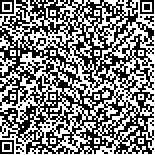Archive > Volume 39 Issue 10 > 2013,39(10):1304-1313. DOI:10.7519/j.issn.1000-0526.2013.10.008 Prev Next
Study of Urban Heat Island Based on Multi-Source Data——By the Example of the Shijiazhuang Area
- Article
- Figures
- Metrics
- Preview PDF
- Reference
- Related
- Cited by
- Materials
Abstract:
The surface meteorological station data, regional automatic station data, MODIS 1B data and Landsat7 ETM+ satellite remote sensing data are used to study urban heat island in Shijiazhuang area. Temperature and land surface temperature data are used to study the impact of the urbanization on urban heat island, the temporal and spatial distribution of the urban heat island, etc. The result showed that: (1) The urban heat island in Shijiazhuang is increasing year by year, sharing the synchronous tendency with urbanization; (2) Temperature and land surface temperature data at the same time are used to study the spatial distribution of the urban heat island, which shows that the days of summer and autumn, and the nights of whole year have remarkable urban heat island (UHI) effect, but the cool island phenomenon sometimes appears in the spring day and the winter day; (3) The night temperature and land surface temperature (LST) were both correlated, the correlation coefficient is 0.80; (4) Landsat7 ETM+ data are used to study the effect of the different land cover categories on UHI, we found that NDVI and LST are negatively correlated. The smaller NDVI is, the higher LST is, and their negative correlation coefficient R2 is 0.72.
Keywords:
Project Supported:
Clc Number:


Mobile website









